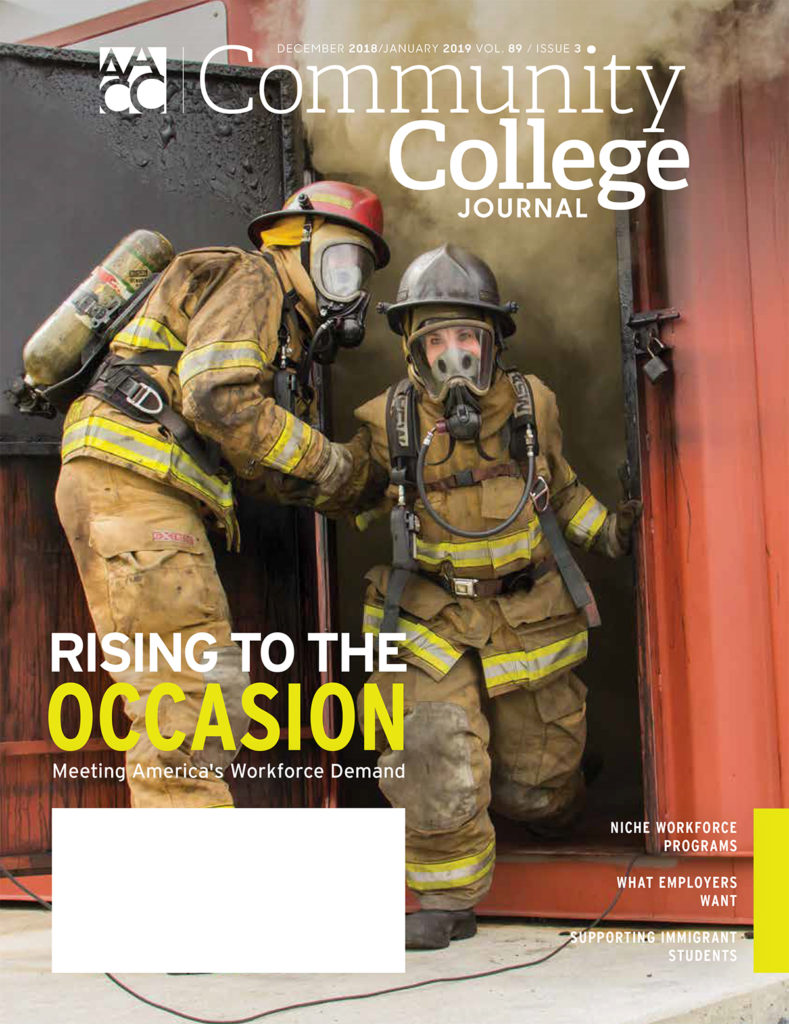In 2009, South Texas College (STC) got a grant to start a Jobs for the Future program. The program targeted the low-income, low-skill workers in the Rio Grande Valley with less than a high school education.
“They were low skill and low literacy,” says Juan Carlos Aguirre, director of STC’s continuing, professional and workforce education. “They just happened to be 50 percent English-as-a-second-language learners.”
It became clear that, to reach all the workers in the target demographic, the college was going to have to address the specific workforce needs of immigrants.
Editor’s note: This excerpt comes from an article in the current issue of the Community College Journal, which the American Association of Community Colleges has published since 1930.
So was born an integrated career pathway program that teaches English within the context of what the student is interested in: jobs that will support their families and support the region’s economy.
Indeed, STC is like many others across the country that are making the connection between a growing immigrant and refugee population and the skills gaps in their regions. And they, too, are adapting, funding workforce development programs for immigrants and refugees.
“Our college president is a strong advocate of the program,” Aguirre says. “She knows and everyone else knows that if the community college cannot help these students, no one can.”
New Americans, future workforce
By 2030, experts expect one in five American workers to have an immigrant background. And there are already 44 million immigrants in the United States. Most arrive with unmet workforce training needs. Even those with advanced degrees from their own countries can face language and cultural barriers that can leave them stuck in jobs that squander their talents.
Community colleges may be an obvious answer to this disconnect. After all, community colleges are already working on the skills gap in many regions, and already work with local employers to develop training programs that meet their needs.
A lot of pieces are in place, but training immigrants can pose logistical challenges—chiefly that immigrants without GEDs or without evidence of advance degrees can’t enroll in college courses. Almost universally, it’s the non-credit side of the college that addresses these needs.
The Community College Consortium for Immigrant Education (CCCIE) is a clearinghouse of technical assistance and a place for college leaders to come together to share best practices. They have an online handbook for career advisors working with foreign-born students, and a book highlighting colleges’ success with immigrant communities and job training will come out in 2019.
“One community college is isolated,” CCCIE Director Jill Casner-Lotto says. “They can’t do it alone. As we do it together, we elevate successes to the national level.”
An ‘enlightened philanthropy community’
It started with a call from an ambulance operator. Could Southern Maine Community College help it staff enough emergency medical technicians (EMTs) to serve the state’s aging population?
The first call came to Eric Wellman, associate professor and program director for the college’s emergency medical services department. But eventually the phone rang on David Zahn’s desk.
“I’m the liaison for new Mainers,” says Zahn, English as a second language (ESOL) and global languages chair at the college. Because he works closely with local community groups serving immigrants and refugees, he knows that a chunk of Maine’s new residents were doctors or healthcare providers in their own countries.
“It seemed like a win-win-win,” he says. “It’s good for new Mainers to get training; everyone is happier when they are doing something that uses their skills. Industry can have more people. The people of Maine can have EMTs who are essentially doctors. How amazing is that?”
So they began to imagine how a hybrid ESL/EMT program would operate. What they came up with was a twist on the tried-and-true approach. They would add English-language training as an adjunct to EMT certification courses, teaching students words they’d need to know as EMTs.
Then they hit up against a bigger hurdle: funding. Before asylum-seekers receive approval to stay in the U.S., they usually aren’t allowed to work. And when they are able to work, they are often working two or three jobs to get by. They don’t have time for education. And they certainly don’t have the money to pay for it, Zahn says.
“So we said, ‘If we could clear the financial hurdle, they could get unstuck and back into a career,’” Zahn remembers.
But that’s a big if, and a big ask. He didn’t start with the state, he says, because the state might be hesitant to fund an untested program. But local philanthropists were used to taking risks.
Zahn started to line up support. He talked to North East Mobile Health Services, an ambulance company that committed to considering new Mainers from the program. They acted as ambassadors with other companies in the field. The company also applied for a grant with Maine Quality Centers, one of the state’s workforce training organizations, to get seed money for the program. It worked.


